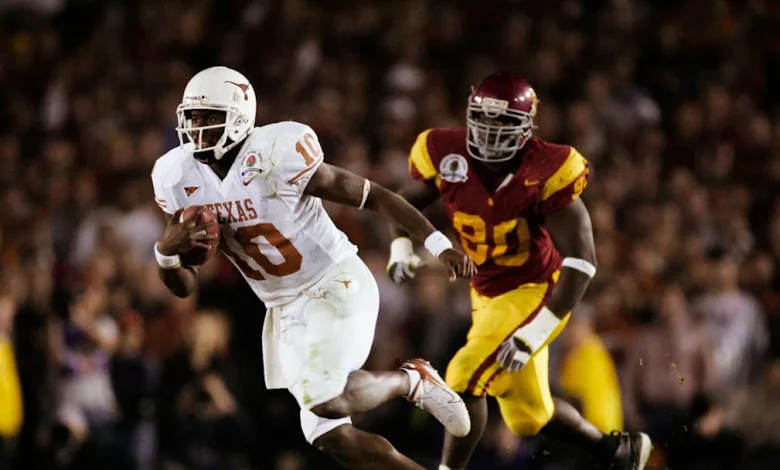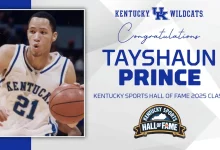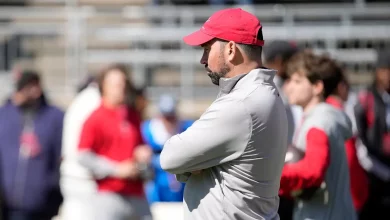Texas Longhorns 2006 Title Win Over USC Named ‘Best Game’ of 2000s

Texas Longhorns 2006 Title Win Over USC Named ‘Best Game’ of 2000s
The 2006 college football season culminated in one of the most iconic and unforgettable games in NCAA history—the Texas Longhorns’ dramatic victory over USC in the BCS National Championship. This game, often hailed as the ‘Best Game’ of the 2000s, transcended mere sport to become a cultural phenomenon, captivating millions with its high stakes, incredible plays, and emotional rollercoaster. From the pre-game hype to the game’s final seconds, the 2006 Texas-USC clash exemplifies the very essence of college football’s drama, passion, and unpredictability. This comprehensive exploration delves into the game’s background, the pivotal moments, the key players, the strategic battles, its cultural impact, and its enduring legacy, illustrating why it rightfully earns the title of the decade’s greatest college football game.
**I. Setting the Stage: The 2006 College Football Landscape**
Before examining the game itself, understanding the context is essential. The 2006 NCAA football season was characterized by a landscape of elite programs, fierce rivalries, and a shifting power dynamic. The BCS system, which aimed to determine the national champion through a combination of polls and computer rankings, often faced criticism for its potential to produce controversial matchups. That season, USC and Texas stood out as the top two teams, both undefeated and dominant in their conferences.
USC, led by Heisman Trophy finalist quarterback Matt Leinart and Heisman-winning running back Reggie Bush, had a powerhouse team that had claimed the 2003 national title and was seeking back-to-back championships. The Trojans’ high-powered offense and disciplined defense had obliterated opponents all season, setting the stage for a showdown.
Texas, under head coach Mack Brown, had a meteoric rise after years of rebuilding. The Longhorns’ journey culminated in an undefeated record, led by quarterback Vince Young—a player whose talent and leadership made him one of the most electrifying athletes in college football history. Texas’s victory over USC would not only secure their first national title since 1970 but also cement Vince Young’s legendary status.
The game was set for January 4, 2006, in Pasadena, California, at the Rose Bowl—an iconic venue that has hosted numerous historic contests. The matchup was billed as a clash of styles: USC’s explosive, pro-style offense against Texas’s balanced, physical approach. Expectations ran high, with the national championship on the line, and millions tuning in worldwide.
**II. Building Anticipation: The Path to the Title Game**
Both teams entered the game undefeated, having navigated grueling schedules and high-pressure situations. USC’s season included dominant wins over Oregon State, Arkansas, and Notre Dame, showcasing their offense’s firepower. Their defense, anchored by linebacker Lofa Tatupu and safety Troy Polamalu, was among the best in the country.
Texas’s journey was equally impressive. The Longhorns defeated top-ranked teams like Ohio State in the Fiesta Bowl and handled Big 12 rivals with grit and resilience. Vince Young’s leadership, combined with a stingy defense led by players like Michael Griffin, made Texas a formidable opponent.
The matchup was perceived as a battle of contrasting philosophies: USC’s finesse and speed versus Texas’s toughness and physicality. The game’s stakes—undeniable; the narratives—rich; and the stage—set for a classic.
**III. The Game Unfolds: A Half-Back-and-Forth Thriller**
From the opening kickoff, the game delivered on its promise of excitement. USC struck first with a quick touchdown pass from Leinart to Dwayne Jarrett, setting an aggressive tone. Texas responded swiftly, capitalizing on USC’s mistakes and showcasing their own offensive prowess.
In the first half, both teams exchanged leads multiple times. USC’s offense, orchestrated by Leinart, showcased its precision, with Reggie Bush making dazzling plays, including a notable 53-yard run and a remarkable catch. Texas’s offense, led by Vince Young, displayed resilience, mixing runs and passes effectively. The first half ended with USC holding a narrow 16-10 lead, but the game’s momentum was clearly shifting.
The second half intensified. Texas’s defense stiffened, forcing turnovers and applying pressure on Leinart. Vince Young, who had been relatively quiet in the first half, began to take over the game. His improvisational skills, athleticism, and leadership became the defining elements of the contest.
One of the game’s most unforgettable moments occurred late in the fourth quarter. Texas trailed 38-33 with less than four minutes remaining. Facing a critical 3rd-and-5, Vince Young evaded pressure and scrambled 17 yards for a first down, igniting the Longhorns’ offense. Then, on a crucial 4th-and-5 play, Young rolled out and threw a touchdown pass to Limas Sweed, giving Texas a 41-38 lead with just 19 seconds remaining.
USC, with one last chance, drove into Texas territory, but the Longhorns’ defense held firm. The final play saw Leinart throw a desperation pass that was tipped and intercepted, sealing Texas’s victory.
**IV. Key Players and Memorable Performances**
Vince Young’s performance is legendary. He accounted for 267 total yards (200 passing, 67 rushing) and scored three touchdowns—two rushing and one passing. His ability to extend plays, make decisive throws, and run when needed epitomized his transcendent talent.
Reggie Bush dazzled with 183 all-purpose yards, including a 53-yard run, and was an offensive catalyst for USC. Matt Leinart completed 15 of 34 passes for 180 yards and two touchdowns, demonstrating his poise but also facing relentless pressure.
Defensively, Texas linebacker Aaron Harris and safety Michael Griffin made critical stops, especially in the final minutes. Texas’s offensive line also deserves credit for protecting Vince Young and creating running lanes.
The game’s drama was heightened by the performances of role players who stepped up at crucial moments, exemplifying the depth and resilience of both teams.
**V. Strategic Battles: Coaching and Game Plan**
Mack Brown’s game plan focused on utilizing Vince Young’s dual-threat abilities, mixing run-pass options and exploiting USC’s aggressive defense. Texas’s physical style aimed to wear down USC’s speed and create turnovers.
USC’s coaching staff, led by Pete Carroll, relied on their explosive passing attack and creative play-calling, trying to outpace Texas’s defense. They aimed to capitalize on their offensive weapons and maintain control.
The adjustments made during the game—such as Texas’s emphasis on scrambling and ball control—played vital roles in the game’s outcome. The coaching chess match was as intense as the on-field action.
**VI. Cultural Impact and Legacy**
The 2006 Texas-USC game transcended sports, becoming a cultural phenomenon. It redefined college football’s narrative, showcasing the sport’s capacity for drama, heroism, and unpredictability.
Vince Young’s heroics elevated him to legendary status, and his post-game interviews reflected humility and leadership. The game was widely praised for its entertainment value, with ESPN and other outlets calling it one of the greatest sporting events of the decade.
The game also had lasting implications:
– **Redefining the National Championship:** It was the last BCS title game before the College Football Playoff era, emphasizing the need for a more inclusive and fair system.
– **Highlighting the Player’s Legacy:** Vince Young’s performance is studied in coaching clinics and remembered as one of the best in college football history.
– **Memorable Moments in Sports:** Plays like Vince Young’s scramble and touchdown pass, Reggie Bush’s dazzling runs, and the final interception remain etched in fans’ memories.
**VII. The Aftermath and Broader Impact**
Texas’s victory marked their first national title in 36 years and was seen as a victory for resilience, determination, and innovative coaching. The game boosted the profiles of the players involved and elevated college football’s popularity.
The game’s excitement and drama contributed to ongoing debates about the fairness of the BCS system, influencing reforms leading to the College Football Playoff system.
Furthermore, the game inspired countless young athletes, reinforced the importance of perseverance, and exemplified the unpredictability and excitement that make college football unique.
**VIII. Enduring Legacy: Why It’s the Best of the 2000s**
The 2006 Texas-USC game is widely regarded as the best college football game of the 2000s because of:
– Its high stakes: a national championship on the line.
– The incredible performances of legendary players, especially Vince Young.
– The dramatic final-minute comeback and game-winning plays.
– The emotional intensity and narrative arcs that captivated fans and media.
– The game’s impact on the sport’s history, culture, and future.
– Its embodiment of college football’s unpredictability, passion, and heroism.
A Classic for the Ages**
In the pantheon of college football history, the 2006 Texas Longhorns versus USC Trojans national championship game stands out as a masterpiece of sports storytelling. It combined strategic brilliance, individual heroism, and unyielding determination, culminating in a game that is still replayed and analyzed years later. Its legacy endures not only because of the thrilling moments and dramatic finish but also because it encapsulates what makes college football special—the pursuit of greatness, the thrill of the unexpected, and the everlasting pursuit of victory against all odds. In every sense, the 2006 game truly deserves its title as the ‘Best Game’ of the 2000s, a testament to the enduring power of sports to inspire, entertain, and unite.









